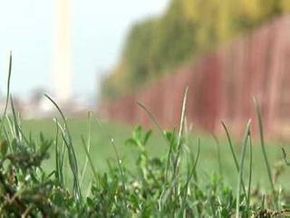 “
“
Over the years, there have been a number of technological developments in the field of irrigation. Although all irrigation systems provide water to plants, the methods for doing so vary widely.
Surface irrigation techniques involve covering an entire field with water. Overhead irrigation wets the plants but produces runoff. In contrast, drip irrigation is a much more controlled irrigation method. It works by exposing the roots to a direct supply of water. This method is facilitated by the use of drip emitters, which release water in a slow and steady fashion. Drip emitters are small — approximately the size of a quarter — and are located on the ground, usually arranged in rows. Drip emitters are connected to a water source by a feeder hose. Another version of drip irrigation uses a hose that has drip emitters built into it. This variation on the drip irrigation technique is called trickle tape.
The greatest benefit of any type of drip irrigation is the control that these methods provide. In addition, these irrigation techniques are highly economical and precise. For example, the amount of water that a typical lawn sprinkler uses is measured in gallons per minute — the standard sprinkler will emit anywhere between one and five gallons (four to 20 liters) of water per minute. In contrast, the amount of water that a drip emitter uses is measured in gallons per hour. Such a slow flow of water virtually guarantees that it will be absorbed into the ground where it will be used more efficiently and where it won’t evaporate. A well-installed, well-maintained drip-irrigation system all but eliminates the phenomenon of water wastefully running off.



























